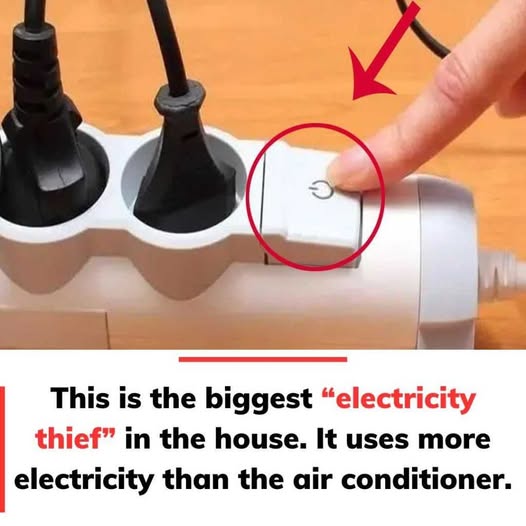ADVERTISEMENT
dicated outlet with the proper voltage and ensure it is on a circuit that can handle its power demands.
For Complete Cooking STEPS Please Head On Over To Next Page Or Open button (>) and don’t forget to SHARE with your Facebook friends
### 5. **Hair Dryers**
**Why Not:** Hair dryers are another high-powered device that can draw more power than a power strip is rated to handle. The surge in energy when turning on a hair dryer can overload the strip, causing it to fail or spark.
**What to Do Instead:** Plug hair dryers directly into a wall outlet to ensure safe operation and avoid electrical hazards.
### 6. **Electric Stoves or Toasters**
**Why Not:** Electric stoves and toasters are high-powered kitchen appliances that require a lot of energy to operate safely. A power strip is not equipped to handle these devices, and plugging them into one can lead to overheating or a fire risk.
**What to Do Instead:** Always plug electric stoves, toasters, and other heavy-duty kitchen appliances directly into a dedicated wall outlet to ensure they function safely.
### 7. **Printers and Scanners (High-Voltage Models)**
**Why Not:** While smaller printers or scanners may be okay to use with a power strip, high-voltage models like industrial printers or large scanners can draw more power than a power strip can safely supply. Overloading the power strip can cause it to fail or damage your equipment.
**What to Do Instead:** Plug high-powered printers or scanners into a direct wall outlet to ensure they receive a stable power supply.
### 8. **Sump Pumps**
**Why Not:** Sump pumps are essential for preventing flooding in basements, and they draw a considerable amount of power. Plugging them into a power strip can result in power strip failure, and if the pump stops working, you may face flooding damage.
**What to Do Instead:** Always plug sump pumps directly into a wall outlet with sufficient power to avoid equipment failure.
### 9. **High-Powered Power Tools**
**Why Not:** Power tools like drills, saws, and other heavy-duty equipment typically require a large amount of power to function. Power strips are not designed for this kind of load, and overloading them can lead to the strip burning out or causing an electrical fire.
**What to Do Instead:** Plug power tools directly into a wall outlet to ensure they receive the necessary power for safe operation.
### What Can You Plug into a Power Strip?
Now that you know what *not* to plug into a power strip, you may be wondering what is safe to use one for. Power strips are typically safe for lower-powered electronics such as:
– Computers and laptops
– TV or entertainment systems
– Small lamps and lights
– Chargers for phones, tablets, and other small devices
Just be sure not to overload the strip and always check the wattage and amperage ratings of both the power strip and the devices you’re plugging into it. It’s also a good idea to purchase a power strip with built-in surge protection to protect your electronics from power surges.
### Conclusion: Prioritize Safety
While power strips are convenient, they are not meant to handle every type of appliance or device. By avoiding plugging high-powered appliances like space heaters, refrigerators, and air conditioners into a power strip, you can protect your home from electrical fires and damage. Always ensure that your high-power devices are plugged directly into a wall outlet, and use power strips only for devices that are safe to operate on lower electrical loads.
Remember, safety first! Follow these guidelines to keep your home and your electronics safe, and ensure your power strips serve their intended purpose without putting you or your family at risk.
